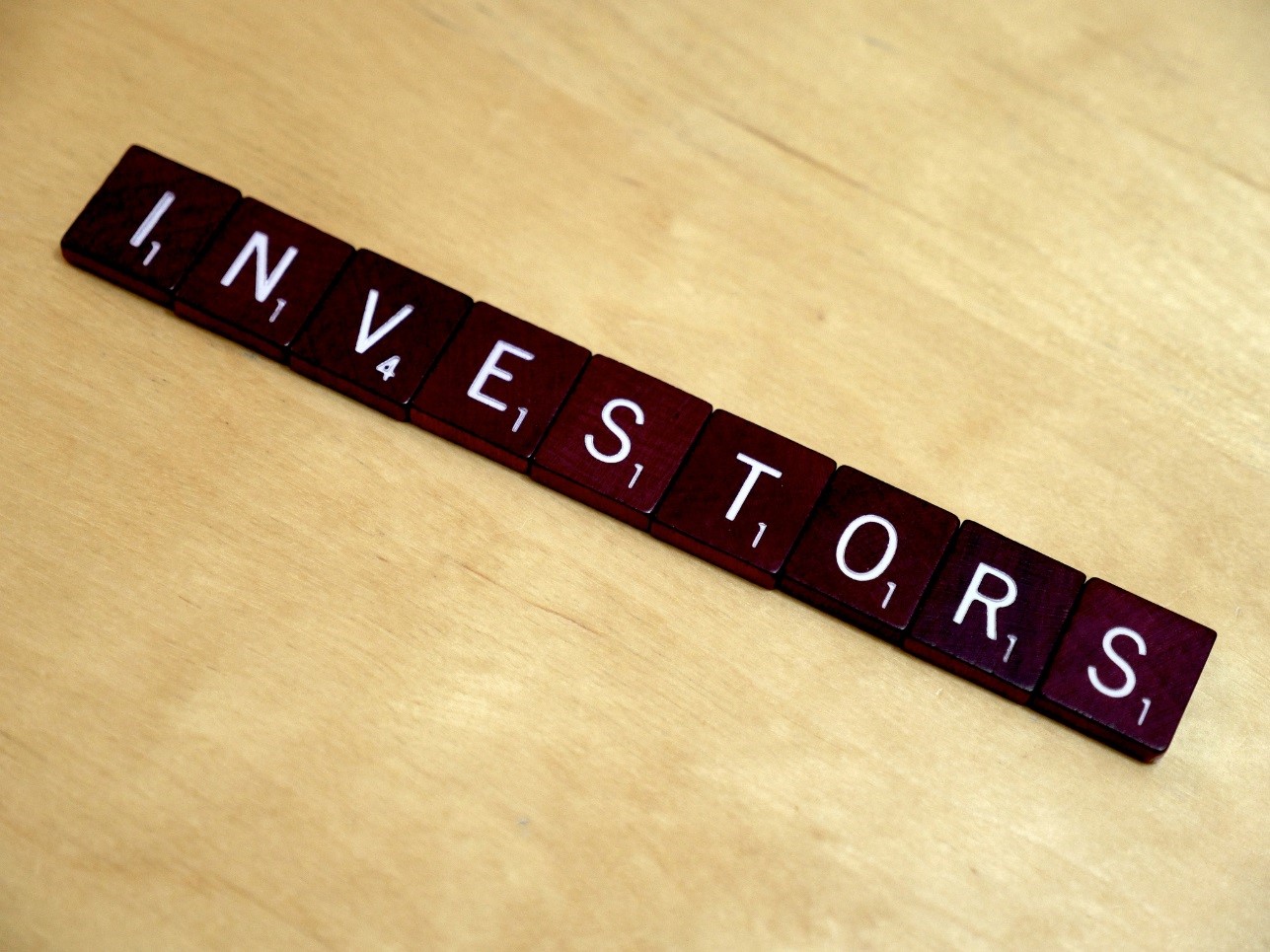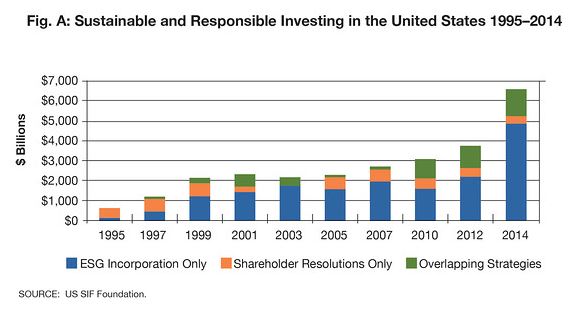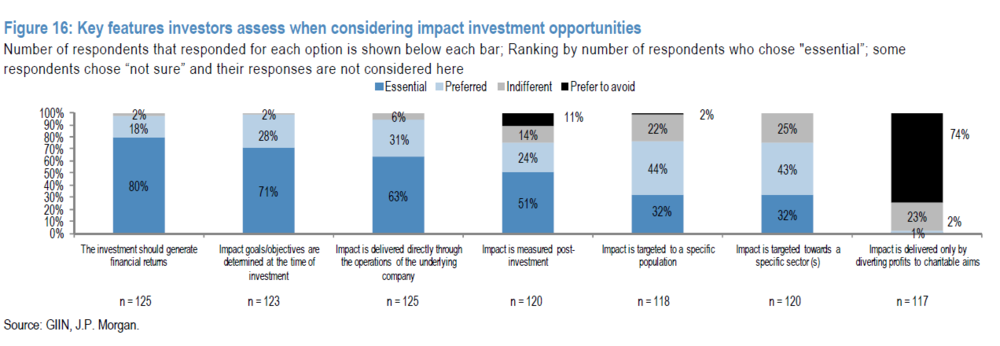
At a Rockefeller Foundation meeting eight years ago in Italy, leaders in philanthropy and finance first coined the term “impact investing,” meaning investments in businesses with a double or triple bottom line: delivering financial, environmental, and social returns.Impact investments are a subset of Sustainable, Responsible and Impact (SRI) investments, and the most change-driven of the three; while sustainable and responsible investments avoid bad corporate practices and certain industries, they don’t necessarily require social returns. In the past few years especially, this trend has exploded (see graph). Impact investors see that profit and social change are not necessarily divorced from one another and consider three factors when investing: return, risk, and impact.Some foundations and organizations also invest in social enterprises through various types of programs; some receive returns, while others provide grants and fellowships. The Skoll Foundation, Acumen, and Echoing Green are a few of the bigger organizations investing in social enterprises.WHY NOW?In a word: millennials. More than any other generation, millennials want to align their investment with their values and make a difference in the world. High net worth millennials are already causing this shift which will only continue to pick up—according to a brief by financial services firm, ImpactAssets, “Over the next several decades, it is estimated that $30 trillion in financial and non-financial assets will pass from Baby Boomers to their heirs in North America alone. This transfer is expected to peak between 2031 and 2045, during which 10% of total wealth in the US will be changing hands every 5 years.” The brief suggests that this group is more globally minded and connected than any other due to the environment they were raised in, which makes them more aware of global issues and believe that they can solve them.While impact investments were previously (and still to some extent) seen as too risky with low returns, that idea is being upended. A recent study by TIAA-CREF is just one of many that confirms that SRI investments consistently perform at market value. Though impact investing is still relatively new, there have been proven returns, making a second wave of people more likely to jump on the bandwagon.
Impact investors see that profit and social change are not necessarily divorced from one another and consider three factors when investing: return, risk, and impact.Some foundations and organizations also invest in social enterprises through various types of programs; some receive returns, while others provide grants and fellowships. The Skoll Foundation, Acumen, and Echoing Green are a few of the bigger organizations investing in social enterprises.WHY NOW?In a word: millennials. More than any other generation, millennials want to align their investment with their values and make a difference in the world. High net worth millennials are already causing this shift which will only continue to pick up—according to a brief by financial services firm, ImpactAssets, “Over the next several decades, it is estimated that $30 trillion in financial and non-financial assets will pass from Baby Boomers to their heirs in North America alone. This transfer is expected to peak between 2031 and 2045, during which 10% of total wealth in the US will be changing hands every 5 years.” The brief suggests that this group is more globally minded and connected than any other due to the environment they were raised in, which makes them more aware of global issues and believe that they can solve them.While impact investments were previously (and still to some extent) seen as too risky with low returns, that idea is being upended. A recent study by TIAA-CREF is just one of many that confirms that SRI investments consistently perform at market value. Though impact investing is still relatively new, there have been proven returns, making a second wave of people more likely to jump on the bandwagon.
Impact Investing Fast Facts
|
WHERE IS THE MONEY INVESTED?As social enterprises cross all sectors, asset classes, and geographies, impact investors often don’t just target one group. However, there are a few sectors that generally see more interest from impact investors than others. ImpactAssets 50, a listing of the top global impact investment fund managers, listed sustainable agriculture, microfinance, and cleantech as the top focus areas of impact investment. “For both money managers and institutional investors, climate change remains the most significant environmental factor in terms of assets, affecting $275.6 billion and $551.5 billion, respectively,” a recent report from the USSIF stated.Yet the field is so broad that it is difficult to give a set of parameters for which investors look. Generally, the same rules still apply to social entrepreneurs when looking for investments as their counterparts in more traditional bottom line focused companies. Often, the team behind the idea is more important than the idea itself. At the Canada-US Impact Investor and Venture Forum held this month in New York, one investor commented that his most successful investments have been with strong, well-connected teams rather than the ones with compelling ideas that lacked structure and discipline.Just as in traditional investing circles, impact advisers and investors look to their friends and colleagues to see who they are funding, which is why personal connections are still invaluable for entrepreneurs and investors alike. A GLOBAL TRENDIn Europe, impact investing has exploded. A recent study by Eurosif shows a 132% growth rate between 2011 and 2013 to an estimated $24 billion market. Breaking down by country, the Netherlands and Belgium saw the largest net growth in impact investing. The UK has been at the forefront from the beginning, with a social impact business classification in place since 2005 and social investment institution, Big Society Capital, creating a number of programs to help foster impact investing.The New South Wales government recently launched Australia’s first governmental effort to support social enterprises with their Social Impact Investment Policy.Bain and Company reports that Latin America has over $2 billion committed to socially responsible investments; Brazil is leading the way with over $180 million invested, followed by Mexico and Colombia. Yet three out of four investments are foreign-based, and the region is still in the early stages with many difficulties to overcome.One of the challenges that Latin America faces is one that also needs to be addressed around the world. Investors and entrepreneurs agree: governments must get involved to help investors support social enterprises through incentives like tax credits or subsidies. In 2013, the teams from seven G8 companies created the Social Impact Investment Taskforce (SIITF) to look at this issue. Their published reports on the status of impact investing and government in their countries identified strengths and weakness of governmental programs and gave suggestions for improvement.As for the future of impact investing, it’s impossible to predict, but those in the arena don’t see that as a bad thing. At the aforementioned Canada-US Impact Investor and Venture Forum, multiple investors drew attention to the rapidly changing landscape of impact investing today. With new social enterprises springing up daily, investors adding them to their portfolios, and governments around the world taking action, the future of investing is here—and it’s a good thing for the world.LEARN MORE:Who to Know: Social Entrepreneurship in NYCMaking Money While Doing Good: The Rise of Social Entrepreneurs
A GLOBAL TRENDIn Europe, impact investing has exploded. A recent study by Eurosif shows a 132% growth rate between 2011 and 2013 to an estimated $24 billion market. Breaking down by country, the Netherlands and Belgium saw the largest net growth in impact investing. The UK has been at the forefront from the beginning, with a social impact business classification in place since 2005 and social investment institution, Big Society Capital, creating a number of programs to help foster impact investing.The New South Wales government recently launched Australia’s first governmental effort to support social enterprises with their Social Impact Investment Policy.Bain and Company reports that Latin America has over $2 billion committed to socially responsible investments; Brazil is leading the way with over $180 million invested, followed by Mexico and Colombia. Yet three out of four investments are foreign-based, and the region is still in the early stages with many difficulties to overcome.One of the challenges that Latin America faces is one that also needs to be addressed around the world. Investors and entrepreneurs agree: governments must get involved to help investors support social enterprises through incentives like tax credits or subsidies. In 2013, the teams from seven G8 companies created the Social Impact Investment Taskforce (SIITF) to look at this issue. Their published reports on the status of impact investing and government in their countries identified strengths and weakness of governmental programs and gave suggestions for improvement.As for the future of impact investing, it’s impossible to predict, but those in the arena don’t see that as a bad thing. At the aforementioned Canada-US Impact Investor and Venture Forum, multiple investors drew attention to the rapidly changing landscape of impact investing today. With new social enterprises springing up daily, investors adding them to their portfolios, and governments around the world taking action, the future of investing is here—and it’s a good thing for the world.LEARN MORE:Who to Know: Social Entrepreneurship in NYCMaking Money While Doing Good: The Rise of Social Entrepreneurs

